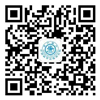The increasing antibiotic mycelial residues (AMRs) have brought significant threats to our ecosystems and public health. Aiming to quantify pollutants generated from AMRs management, evaluate corresponding environmental impacts, and identify the key factors related with AMRs management, a life cycle assessment approach was employed on analyzing AMRs. In order to improve the accuracy of results, uncertainty analysis was also performed so that a holistic picture of environmental emissions generated from AMRs management is presented. Results show that human toxicity, terrestrial ecotoxicity, marine ecotoxicity, and fossil depletion are the major environmental impacts caused by AMRs management. Uncertainty analysis reveals that the gasification of AMRs is the best option among the four AMRs treatment scenarios due to its large energy recovery capacity, while incineration scenario has the worst environmental performance due to its large pollutants emissions and sodium hydrogen consumption. Results obtained from this study (e.g., environmental impacts, key factors, and potential improvement) could provide valuable insights to policymakers so that the overall environmental impacts from AMRs management can be mitigated.
![]() Life cycle assessment of antibiotic mycelial residues management in China.pdf
Life cycle assessment of antibiotic mycelial residues management in China.pdf
地址:上海市徐汇区华山路1954号新建楼 邮箱:ciug@sjtu.edu.cn 电话:021-62934788 邮编:200030
版权所有©上海交通大学中国城市治理研究院 沪交ICP备20170055

公众号
二维码
